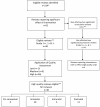Public health interventions in midwifery: a systematic review of systematic reviews
- PMID: 23134701
- PMCID: PMC3544621
- DOI: 10.1186/1471-2458-12-955
Public health interventions in midwifery: a systematic review of systematic reviews
Abstract
Background: Maternity care providers, particularly midwives, have a window of opportunity to influence pregnant women about positive health choices. This aim of this paper is to identify evidence of effective public health interventions from good quality systematic reviews that could be conducted by midwives.
Methods: Relevant databases including MEDLINE, Pubmed, EBSCO, CRD, MIDIRS, Web of Science, The Cochrane Library and Econlit were searched to identify systematic reviews in October 2010. Quality assessment of all reviews was conducted.
Results: Thirty-six good quality systematic reviews were identified which reported on effective interventions. The reviews were conducted on a diverse range of interventions across the reproductive continuum and were categorised under: screening; supplementation; support; education; mental health; birthing environment; clinical care in labour and breast feeding. The scope and strength of the review findings are discussed in relation to current practice. A logic model was developed to provide an overarching framework of midwifery public health roles to inform research policy and practice.
Conclusions: This review provides a broad scope of high quality systematic review evidence and definitively highlights the challenge of knowledge transfer from research into practice. The review also identified gaps in knowledge around the impact of core midwifery practice on public health outcomes and the value of this contribution. This review provides evidence for researchers and funders as to the gaps in current knowledge and should be used to inform the strategic direction of the role of midwifery in public health in policy and practice.
Figures


Similar articles
-
A systematic review of systematic reviews of interventions to improve maternal mental health and well-being.Midwifery. 2013 Apr;29(4):389-99. doi: 10.1016/j.midw.2012.05.010. Epub 2012 Aug 9. Midwifery. 2013. PMID: 22882967
-
Health professionals' experience of teamwork education in acute hospital settings: a systematic review of qualitative literature.JBI Database System Rev Implement Rep. 2016 Apr;14(4):96-137. doi: 10.11124/JBISRIR-2016-1843. JBI Database System Rev Implement Rep. 2016. PMID: 27532314
-
Pain management for women in labour: an overview of systematic reviews.Cochrane Database Syst Rev. 2012 Mar 14;2012(3):CD009234. doi: 10.1002/14651858.CD009234.pub2. Cochrane Database Syst Rev. 2012. PMID: 22419342 Free PMC article.
-
Cost-effectiveness of using prognostic information to select women with breast cancer for adjuvant systemic therapy.Health Technol Assess. 2006 Sep;10(34):iii-iv, ix-xi, 1-204. doi: 10.3310/hta10340. Health Technol Assess. 2006. PMID: 16959170
-
Interventions to improve the use of systematic reviews in decision-making by health system managers, policy makers and clinicians.Cochrane Database Syst Rev. 2012 Sep 12;2012(9):CD009401. doi: 10.1002/14651858.CD009401.pub2. Cochrane Database Syst Rev. 2012. PMID: 22972142 Free PMC article.
Cited by
-
Evidence-based practice utilization and associated factors among nurses in the emergency department of selected public hospitals, Addis Ababa, Ethiopia, 2024: cross-sectional study.BMC Health Serv Res. 2025 May 1;25(1):628. doi: 10.1186/s12913-025-12810-w. BMC Health Serv Res. 2025. PMID: 40307799 Free PMC article.
-
Public health education for midwives and midwifery students: a mixed methods study.BMC Pregnancy Childbirth. 2012 Dec 7;12:142. doi: 10.1186/1471-2393-12-142. BMC Pregnancy Childbirth. 2012. PMID: 23216855 Free PMC article.
-
An overview of reviews of breastfeeding barriers and facilitators: Analyzing global research trends and hotspots.Glob Epidemiol. 2025 Mar 6;9:100192. doi: 10.1016/j.gloepi.2025.100192. eCollection 2025 Jun. Glob Epidemiol. 2025. PMID: 40129756 Free PMC article. Review.
-
A critical interpretive synthesis of the roles of midwives in health systems.Health Res Policy Syst. 2020 Jul 8;18(1):77. doi: 10.1186/s12961-020-00590-0. Health Res Policy Syst. 2020. PMID: 32641053 Free PMC article.
-
Investigating midwives' barriers and facilitators to multiple health promotion practice behaviours: a qualitative study using the theoretical domains framework.Implement Sci. 2019 Jun 18;14(1):64. doi: 10.1186/s13012-019-0913-3. Implement Sci. 2019. PMID: 31215450 Free PMC article.
References
-
- Midwifery 2020 Programme. Midwifery 2020: Delivering Expectations. London: Midwifery 2020; 2010.
-
- United Nations. The millennium development goals report 2008. New York: United Nations Department of Social and Economic Affairs; 2008.
Publication types
MeSH terms
LinkOut - more resources
Full Text Sources

